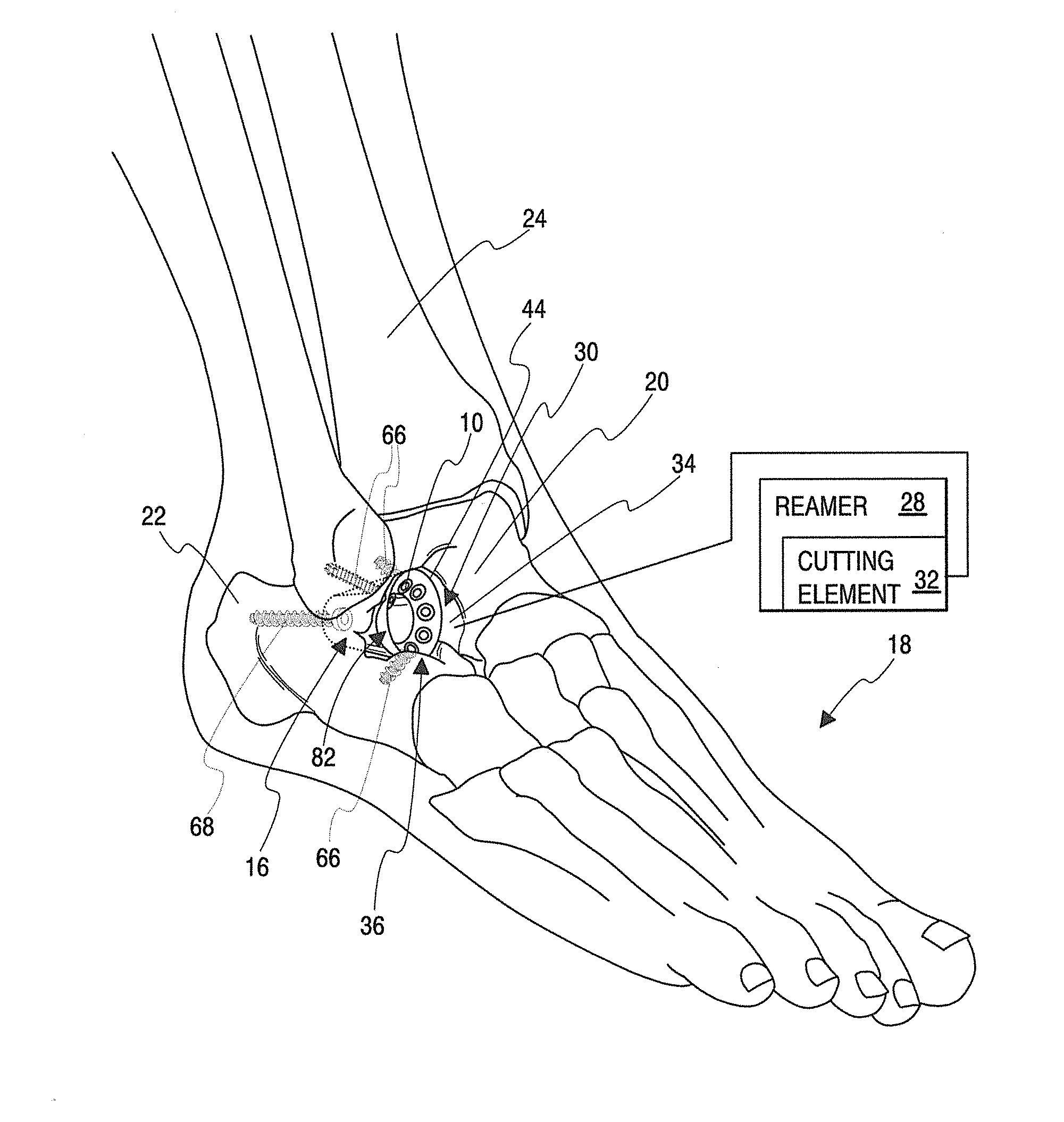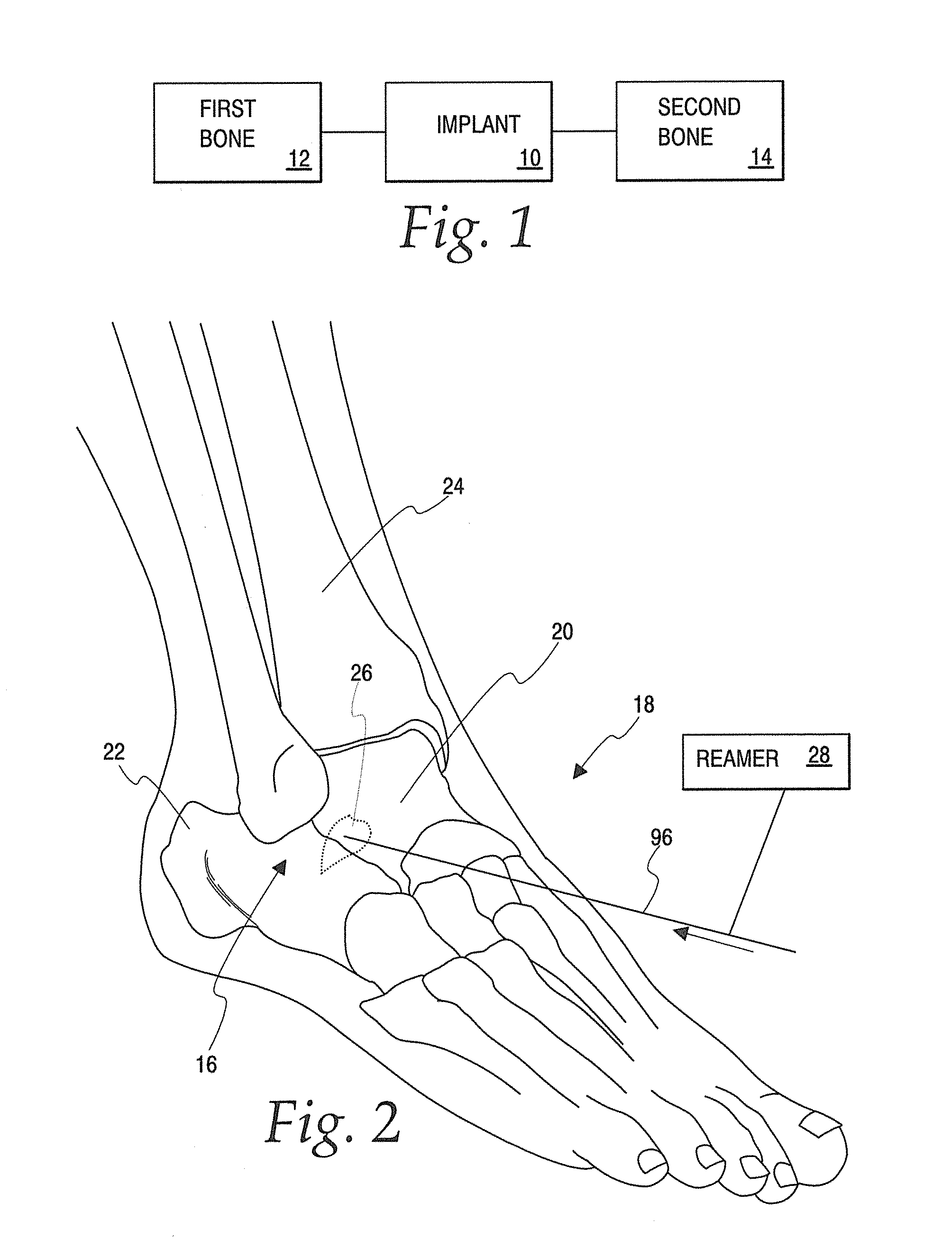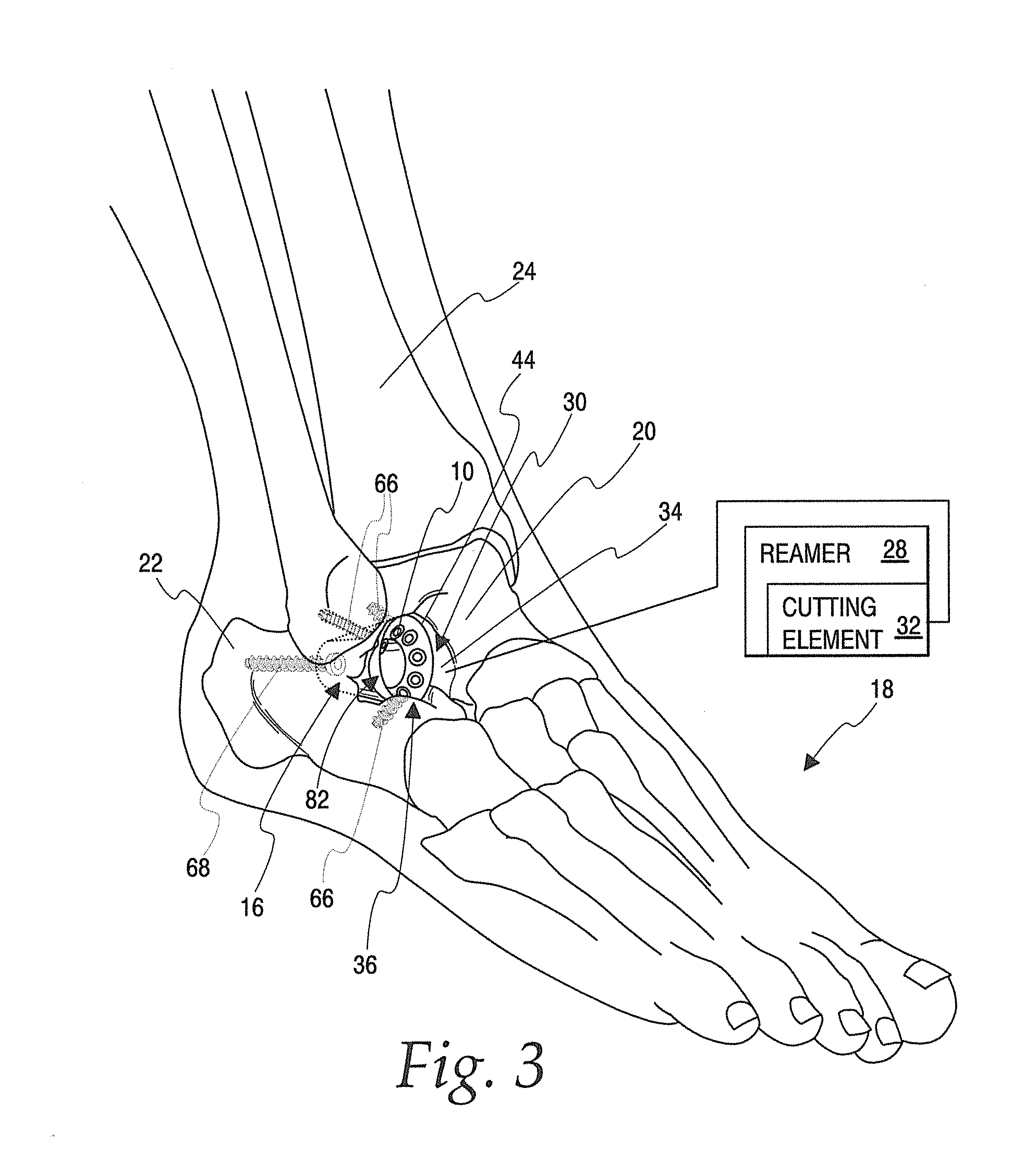Implant for fixation of first and second bones and method of fixing first and second bones using the implant
- Summary
- Abstract
- Description
- Claims
- Application Information
AI Technical Summary
Benefits of technology
Problems solved by technology
Method used
Image
Examples
Embodiment Construction
[0076]In FIG. 1, there is a generic showing of the inventive implant 10 used to fix first and second bones 12, 14, respectively. The implant 10 and bones 12, 14 are shown schematically to cover the full breadth of the invention. The schematic showing of the implant 10 is intended to encompass all versions, as described herein, and virtually an unlimited number of variations thereof that would be apparent to one skilled in the art from the disclosure herein. The first and second bones 12, 14 are shown schematically to include specific bones for which the implant 10 is particularly adapted, as described hereinbelow, and bones at any site in the human body that might be fixed consistently with the principles described herein.
[0077]The invention will be described herein as used at the subtalar joint at 16 on a human foot at 18, as shown in FIGS. 2-4. The subtalar joint 16 is located where the talus 20 sits on top of the calcaneus 22. The tibia 24 is situated on top of the talus 20. A co...
PUM
 Login to View More
Login to View More Abstract
Description
Claims
Application Information
 Login to View More
Login to View More - R&D Engineer
- R&D Manager
- IP Professional
- Industry Leading Data Capabilities
- Powerful AI technology
- Patent DNA Extraction
Browse by: Latest US Patents, China's latest patents, Technical Efficacy Thesaurus, Application Domain, Technology Topic, Popular Technical Reports.
© 2024 PatSnap. All rights reserved.Legal|Privacy policy|Modern Slavery Act Transparency Statement|Sitemap|About US| Contact US: help@patsnap.com










